
Lake freighters, or lakers, are bulk carrier vessels that operate on the Great Lakes of North America. These vessels are traditionally called boats, although classified as ships.
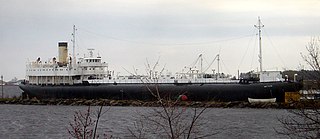
SSMeteor is the sole surviving ship of the unconventional "whaleback" design. The design, created by Scottish captain Alexander McDougall, enabled her to carry a maximum amount of cargo with a minimum of draft. Meteor was built in 1896 in Superior, Wisconsin, United States, and, with a number of modifications, sailed until 1969. She is now a museum ship in the city of her construction.
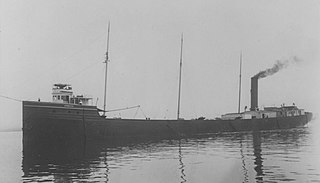
The SS Appomattox was a wooden-hulled, American Great Lakes freighter that ran aground on Lake Michigan, off Atwater Beach off the coast of Shorewood, Wisconsin in Milwaukee County, Wisconsin, United States in 1905. On January 20, 2005 the remnants of the Appomattox were listed on the National Register of Historic Places.
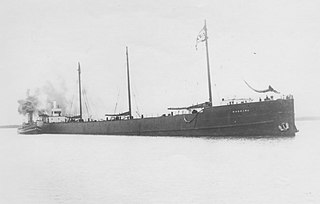
Madeira was a schooner barge that sank off the coast of Minnesota in Lake Superior on November 28, 1905. A schooner barge is a type of ship that functions like a barge, in that it is towed by a steamship, but also has sails like a schooner. This type of ship evolved from wooden sailing ships that were cut down into barges and towed behind wooden steamships, a practice which originated in the late 1880s in coastal areas. This design was commonly used in the Great Lakes for transporting grain, iron ore, and other products.

A whaleback was a type of cargo steamship of unusual design, with a hull that continuously curved above the waterline from vertical to horizontal. When fully loaded, only the rounded portion of the hull could be seen above the waterline. With sides curved in towards the ends, it had a spoon bow and a very convex upper deck. It was formerly used on the Great Lakes of Canada and the United States, notably for carrying grain or ore. The sole surviving ship of the "whaleback" design is the SS Meteor, which is docked in Superior, Wisconsin, as a museum ship.

The SS Vienna was built in 1873 during the era when steamers were built with sail rigging. She had a 19 year career marked with maritime incidents including sinking when she was just three years old. She sank for her final time in fair weather in Whitefish Bay in Lake Superior after she received a mortal blow when she was inexplicably rammed by the steamer Nipigon. Although there were no deaths when the Vienna sank for the last time, more than 100 years later her wreck claimed the lives of 4 scuba divers, the most of all the wrecks in the Whitefish Point Underwater Preserve that now protects her as part of an underwater museum. Her wreck was stripped of artifacts that resulted in the Michigan Department of Natural Resources seizing her artifacts in a raid on the Great Lakes Shipwreck Museum in 1992. Her artifacts are now on display in this museum as loan from the State of Michigan.
Consort is a nautical term for unpowered Great Lakes vessels, usually a fully loaded schooner barge or steamer barge, towed by a larger steamer that would often tow more than one barge. The consort system was used in the Great Lakes from the 1860s to around 1920. Mariner and historian Mark Thompson wrote that the unpowered barges were "uninspected vessels" not regulated by the marine safety laws. He reported that between 1870 and 1940, the dangerous practice of towing unpowered vessels resulted in many of the most serious groundings when they broke loose or were cut loose during storms.

The Miztec was built as a 3-masted schooner in 1890. She was later converted to a schooner barge and served as a consort for lumber hookers on the Great Lakes. She escaped destruction in a severe 1919 storm that sank her longtime companion, the SS Myron, only to sink on the traditional day of bad luck, Friday the 13th, 1921, with the loss of all hands. She came to rest on Lake Superior's bottom off Whitefish Point near the Myron.

SS Mataafa was an American steamship that had a lengthy career on the Great Lakes of North America, first as a bulk carrier and later as a car carrier. She was wrecked in 1905 in Lake Superior just outside the harbor at Duluth, Minnesota, during a storm that was named after her. She was built as SS Pennsylvania in 1899, and renamed Mataafa when she was purchased in the same year by the Minnesota Steamship Company. After her 1905 wreck, she was raised and repaired, and served for another sixty years before being scrapped.
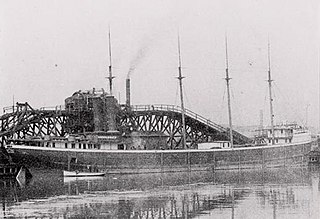
The SS Kaliyuga was a steamship that sank with the loss of 16 lives on Lake Huron on the night of October 19/20, 1905. The wreck of the Kaliyuga has never been found, and the cause of her sinking remains a mystery.

The SS John Sherman, originally the USRC Sherman or USRC John Sherman was built for the United States Revenue Cutter Service in 1865 before being disposed of by the United States Government in 1872. It was a United States sidewheeler ship initially used as a Revenue Cutter on the Great Lakes of North America before being used for ferry service across Lake Michigan between the states of Michigan and Wisconsin. In 1874 the ship was chartered by Flint and Pere Marquette Railroad to become the first ship used by the company transporting freight and passengers.

SS Robert Wallace was a wooden-hulled American bulk freighter that served on the Great Lakes of North America from her construction in 1882 to her sinking in 1902 on Lake Superior near the town of Palmers, St. Louis County, Minnesota, United States. On November 17, 1902 shortly after leaving Superior, Wisconsin with a cargo of iron ore, Robert Wallace sprang a leak and sank. Her wreck was found in 2006, and on October 14, 2009, the wreck of Robert Wallace was listed in the National Register of Historic Places.

The Australasia was a wooden-hulled American Great Lakes freighter that served on the Great Lakes of North America between her construction in 1884 to her burning and sinking in 1896. On October 18, 1896, while loaded with coal, the Australasia sank in Lake Michigan near the town of Sevastopol, Door County, Wisconsin, United States, after burning off Cana Island. On July 3, 2013, the wreck of the Australasia was added to the National Register of Historic Places.

The George Spencer was a wooden lake freighter that sank on along with her schooner barge Amboy on Lake Superior, near Thomasville, Cook County, Minnesota in the Mataafa Storm of 1905. On April 14, 1994, the wrecks of the Spencer and the Amboy were listed on the National Register of Historic Places.
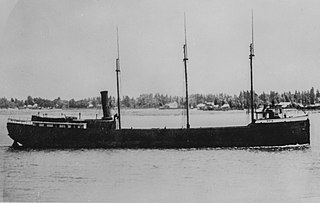
SS Ohio was a wooden hulled Great Lakes freighter that served on the Great Lakes of North America from her construction in 1875, to her sinking in September 1894 when she collided with the schooner barge Ironton which also sank in the collision. Ironton was being towed by the steamer Charles J. Kershaw, which was also towing the schooner Moonlight. Ohio was found upright in 2017, over 122 years after her sinking in over 200 feet of water off Presque Isle, Michigan. In March, 2023, it was announced that Ironton had been located in 2019. The researchers who discovered Ohio plan to nominate her for a listing in the National Register of Historic Places.

The Amboy was a wooden schooner barge that sank along with her towing steamer, the George Spencer on Lake Superior off the coast of Schroeder, Cook County, Minnesota in the United States. In 1994 the remains of the Amboy were added to the National Register of Historic Places.
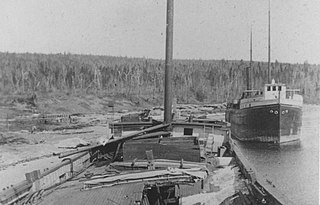
The AmboyandGeorge SpencerShipwreck Site is an archeological shipwreck site which consists of the wrecks of the wooden bulk freighter George Spencer and the wooden schooner-barge Amboy. Both vessels were wrecked during the Mataafa Storm of 1905. In 1994 the site was added to the National Register of Historic Places.

SS Selah Chamberlain was a wooden-hulled Great Lakes freighter that sank in Lake Michigan in 1886, 6 miles (10 km) off the coast of Sheboygan, Sheboygan County, Wisconsin, United States after being rammed by the steamer John Pridgeon Jr. with the loss of five lives. On January 7, 2019, the wreck of Selah Chamberlain was listed on the National Register of Historic Places, and was given the reference number 100003288. She was the first shipwreck listed on the National Register of Historic Places in 2019.

SS Vernon was a wooden-hulled American passenger and package freighter that sank in a Lake Michigan storm on October 29, 1887, near Two Rivers, Wisconsin, with the loss of between 36 and 50 lives, making her one of the deadliest shipwrecks ever to have occurred in Wisconsin. Only one of the people on board survived.
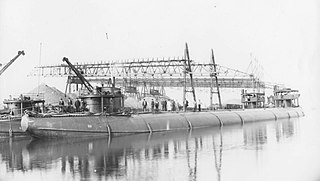
115 was an American whaleback barge in service between 1891 and 1899. She was built between May and August 1891, in Superior, Wisconsin by Alexander McDougall's American Steel Barge Company, for the "McDougall fleet", based in Buffalo, New York. She was one of a class of distinctive, experimental ship designed and built by McDougall. The whalebacks were designed to be more stable in high seas. They had rounded decks, and lacked the normal straight sides seen on traditional lake freighters. 115 entered service on August 25, hauling iron ore from Superior.



















